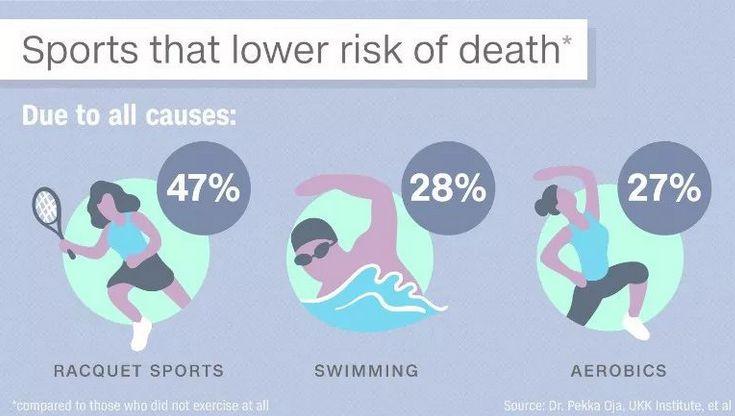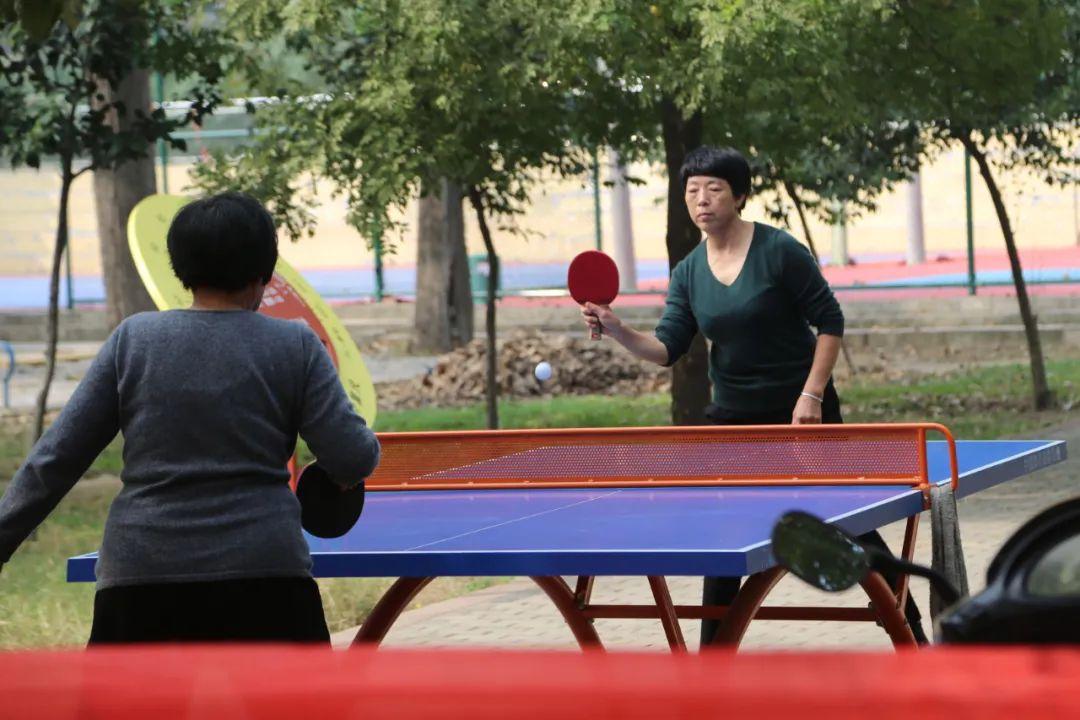According to the Health Times, everyone knows that "exercise is good for physical and mental health", but the cost performance of various sports is different. With the same exercise time and intensity, some exercises can better reduce mortality and bring health benefits; Some sports make people tired to death and have limited effect.
So, which sports are cost-effective and most beneficial to the health of the general population?
The three most cost-effective sports
In 2018, a survey report involving 80,000 people in the famous medical journal The Lancet for 15 years gave the answer-the researchers analyzed the relationship between different kinds of sports and all-cause mortality and found the three most cost-effective sports. ①

3rd place: Indoor aerobic exercise-reducing all-cause mortality by 27%.
Common events: aerobics, yoga, dancing and other aerobic exercises.
Indoor aerobic exercise can play the role of exercising heart and lung function, improving vascular function and losing weight, help to improve hypertension, hyperglycemia and hyperlipidemia, and reduce the risk of cardiovascular diseases by about 36%. If the recommended amount of exercise can be achieved, the all-cause mortality can be reduced by about 27%. ①
2 nd place: swimming-reducing all-cause mortality by 28%
Common strokes: breaststroke, backstroke, freestyle, etc.
Swimming can help improve the whole body blood circulation and enhance the heart and lung function, prevent the elderly from suffering from cardiovascular diseases such as arteriosclerosis, delay the decline of respiratory organ function, and reduce the risk of cardiovascular diseases by about 41%. If the recommended amount of exercise can be achieved, the all-cause mortality can be reduced by about 28%. Moreover, swimming has less pressure on spinal joints and knee joints, and it is less likely to be injured. ①
1st place: Swing sports-reducing all-cause mortality by 47%.
Common events: badminton, table tennis, tennis, etc.
Swing sports often need to mobilize multiple muscle groups of the body, and the eyes look at the ball for hand-eye coordination. At the same time, at the moment of hitting the ball, there will be a relative explosive force. It emphasizes coordination, flexibility and endurance, which can help us to improve the strength of musculoskeletal, cardiopulmonary function and coordination, make people’s attention more concentrated, make the brain active, and help delay the aging of the brain and protect the cardiovascular system.
Compared with people who don’t exercise, people who do swing exercise can reduce the risk of cardiovascular diseases by about 56%, and if they can achieve the recommended amount of exercise, they can reduce the all-cause mortality by about 47%. ①

Photo by Wang Shuangzheng
How long does it take for exercise to achieve "effect"
Another reason why these three kinds of sports are "cost-effective" is that they really save time.
You can get the highest "health benefits" by exercising for 45~60 minutes at a time and 3~5 days a week. Less than 45 minutes, the effect is weakened, and more than 60 minutes, the income will not be higher. ①
Moreover, the "threshold" of these sports is not high, it is easy to learn, and it can be said that everyone can participate.
It is best to exercise at this "time period" every day.
In February, 2023, Zhang Jihui team of Brain Hospital affiliated to Guangzhou Medical University published a study in the journal Nature Communication. Studies have shown that at any time of the day, moderate to intense physical activity can reduce the risk of all-cause, cardiovascular disease and cancer death. Importantly, compared with other time periods, daily exercise from 11: 00 to 17: 00 further reduces the mortality of all-cause mortality and cardiovascular diseases. ②

The results showed that compared with the morning group and the evening group, the all-cause mortality of people who exercised from 11: 00 to 17: 00 every day decreased by 11%, and the mortality of cardiovascular diseases decreased by as much as 28%.
Before and after exercise, you must do these five points well.
1. Make full warm-up before exercise.
To warm up before exercise, you can jog, stretch your upper limbs, bend your waist forward and then stretch it, turn your waist, squat down and other actions to accelerate the blood circulation of your muscles and quickly enter the state of exercise to avoid injury during exercise.
Warm-up exercise is to make the heart and organs have a process of acceptance and preparation. No matter how healthy your body is, this link must be indispensable.
Step by step and do what you can.
Exercise should remember not to blindly spell strength and number of steps, but should be done step by step and according to one’s ability, especially those who are obese or have joint diseases, and should be alert to the damage caused by excessive exercise.
People who don’t move at ordinary times had better not exercise suddenly and violently. Exercise should become a habit. Muscle strain can easily be caused if the muscle does not suddenly bear excessive exercise load for a long time.
3. Do a "cold exercise" after exercise.
A sudden stop after strenuous exercise is equivalent to "braking suddenly", and a "cold exercise" should be done after exercise. Liu Peizhong, deputy chief physician of Cardiovascular Department of Zhuhai Hospital of Guangdong Provincial Hospital of Traditional Chinese Medicine, introduced in the Health Times article in 2019 that cold exercise can slow down the rapid heartbeat to a safe level; Accelerate the excretion of metabolites such as lactic acid, relax muscles, eliminate fatigue as soon as possible, promote physical recovery, and reduce muscle soreness after exercise. ③
Jogging, brisk walking, stretching and relaxing after strenuous exercise can maintain and promote the return of blood. In the cold exercise, gradually slow down the action, and the heart rate drops below 120 beats/min, which usually takes 5 ~ 10 minutes.
4. Don’t overeat after exercise
Within 1 hour after strenuous exercise, it is generally not recommended to overeat (you can drink water in moderation, eat biscuits and other digestible foods), take a bath, sleep and so on. At this time, the blood supply and function of internal organs have not been fully recovered, such as gastrointestinal function, liver and kidney function, etc., which will have a certain impact on the absorption of new nutrients and the excretion of metabolites in the body, and also avoid the adverse reactions caused by insufficient blood supply and oxygen supply to the brain due to the concentration of whole body blood in a certain part. ③
5. Don’t stop exercising when you feel unwell.
"Sports sudden death is also easy to occur after injury, illness, poor health, overwork, lack of sleep, cold and fever." In an interview with Hebei News Network in 2016, Hu Xitian, chief physician of the Fourth Department of Cardiology, the First Hospital of Shijiazhuang City, reminded that if you are tired recently, it is best to reduce strenuous exercise. Once you feel chest tightness, lack of oxygen, dizziness and radiation pain in your back, you should immediately stop exercising and go to the hospital for examination. ④